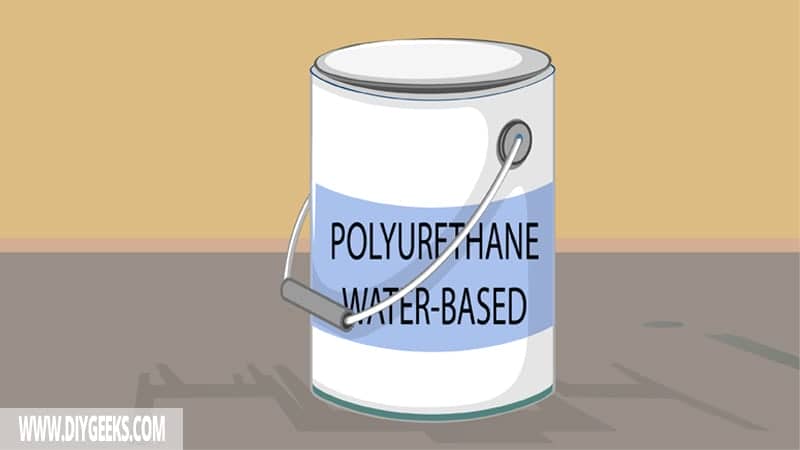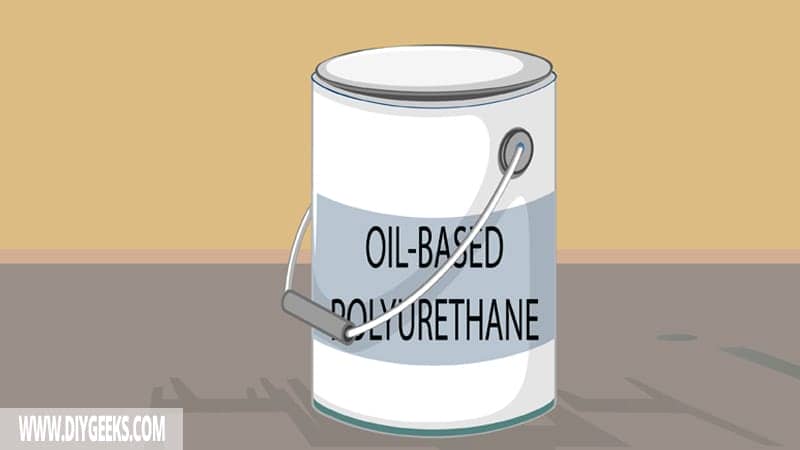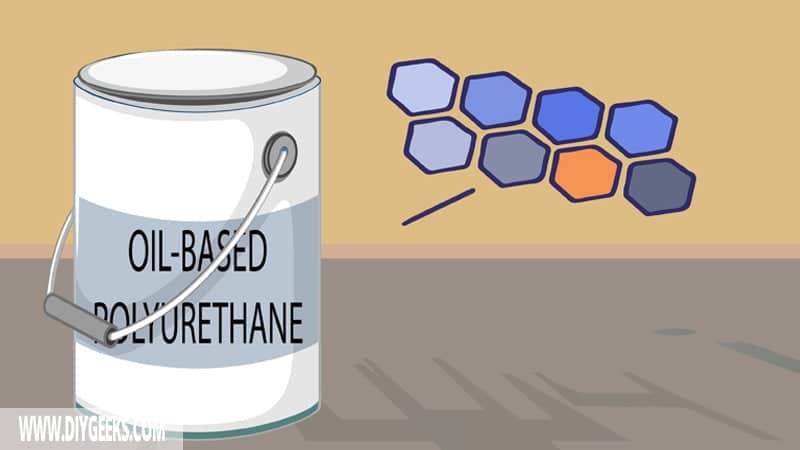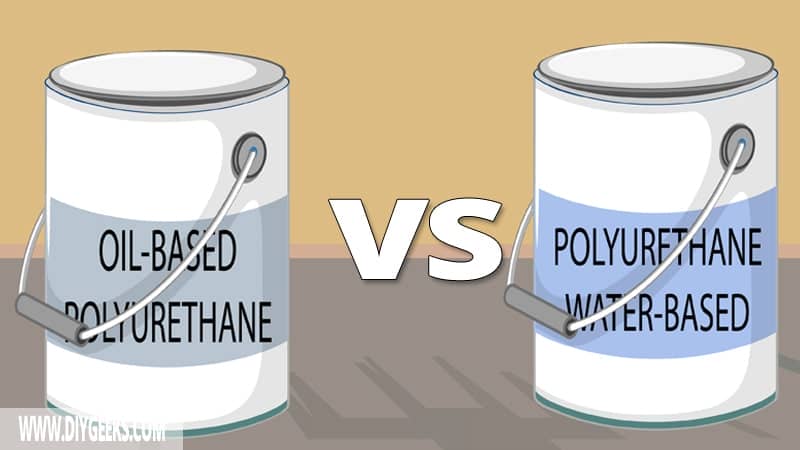Water-based and oil-based polyurethane are two polyurethane types that form a moisture-resistant layer over the surface and protect it from moisture, water, and scratches.
The main difference between water-based and oil-based polyurethane is the solvent. The solvent difference makes them have a different dry time and durability.
Water-based polyurethane dries faster, retains its clear finish for longer, and is easier to apply. Oil-based polyurethane has a longer dry time but creates a more durable finish that is suited for exterior surfaces.
What is Water-based Polyurethane?

Water-based polyurethane is a protective coating that creates a moisture-resistant layer over the surfaces. It uses water as its main solvent — Its solvent (water) gives the sealer a faster dry time and allows you to apply multiple coats faster.
Since water-based polyurethane doesn’t use oil as its solvent, its finish doesn’t yellow and retains its clear finish for longer.
This sealer is more suited for interior surfaces but can be applied to exterior surfaces too.
What is Oil-based Polyurethane?

Oil-based polyurethane is a protective coating that forms a glossy moisture-resistant layer (barrier) over the surface.
Its main solvent is natural or synthetic oil which gives it a longer dry time. Since oil-based polyurethane takes longer to dry, the binders and additives have more time to harder and bind together, forming a super durable finish.
It offers good surface coverage as it has a thick viscosity. However, oil-based polyurethane tends to yellow over time because of the high oil amount.
Water-based vs Oil-based Polyurethane
The differences between water-based and oil-based polyurethane are listed below.
The Formula

Water-based and oil-based polyurethane have a similar formula, but they have different solvents.
Water-based polyurethane uses water as its solvent, while oil-based polyurethane uses oil as its solvent.
Dry Time
Water-based polyurethane dries faster than oil-based polyurethane because it uses water as its solvent.
Since polyurethane dries through solvent evaporation, the faster the solvent evaporates, the faster the coating dries and becomes hard (or rigid). Water evaporates faster than oil.
Water-based polyurethane takes around 6-8 hours to dry between coats, while oil-based polyurethane takes around 24 hours.
Finish Hardness
Oil-based polyurethane is more hard (or rigid) than water-based polyurethane because it takes longer to dry and the binders have more time to harden and bind together.
Finish Durability
Oil-based polyurethane lasts longer than water-based polyurethane because it has a harder, glossier, and more rigid finish.
Interior or Exterior Surfaces
Water-based polyurethane is more suited for interior surfaces, while oil-based or exterior polyurethane is more suited for exterior surfaces.
However, you can use both polyurethane types over interior and exterior surfaces.
Finish Clarity
Water-based and oil-based polyurethane have a clear (or transparent) finish that doesn’t affect the surface color shade. However, water-based polyurethane retains its clear finish longer.
Oil-based polyurethane finish tends to yellow over time because of the high oils in its formula.
Viscosity
Oil-based polyurethane has a thicker viscosity than water-based polyurethane as it uses oil as its solvent and has more additives in the formula.
Protection
Water-based and oil-based polyurethane offers similar protection levels, but oil-based polyurethane offers slightly more protection to surfaces.
However, both polyurethane types create a plastic-like moisture-resistant that protects surfaces from moisture, water, scratches, and other elements.
Application
Water-based polyurethane is easier to apply than oil-based polyurethane as it has a thinner viscosity that is easier to control, and a faster dry time.
Oil-based polyurethane has a thicker viscosity that can reveal brush marks once it dries, and its finish tends to attract more dust or debris as it takes longer to dry.
Surface Coverage
Oil-based polyurethane offers better surface coverage with fewer coats than water-based polyurethane as it has a thicker viscosity.


